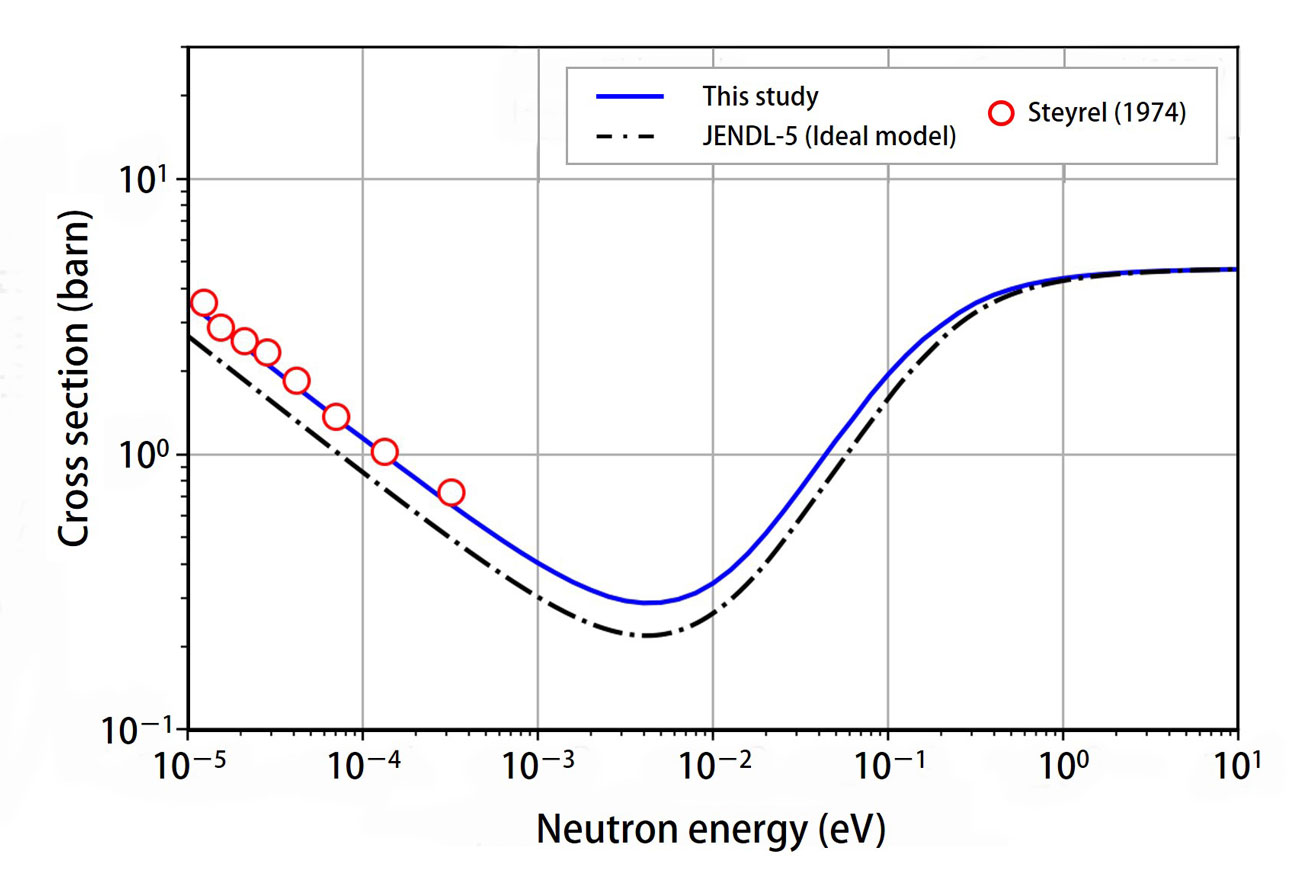 |
Topics
Improving the Prediction Accuracy of Neutronic Properties in High-Temperature Gas-Cooled Reactors
−Evaluation of Inelastic-Scattering Cross-Section Data for Crystalline Graphite−

Fig. 1 Comparison of the evaluated inelastic-scattering cross-section data (this study and JENDL-5)
with the corresponding measured data (Steyrel (1974))
When designing high-temperature gas-cooled reactors (HTGRs) with graphite moderators, accurately examining the behavior of thermal neutrons during core analysis is essential. This evaluation requires a quantitative consideration of the interactions between thermal neutrons and low-frequency lattice vibrations in graphite crystals, which exhibit an energy range identical to that of thermal neutrons. The inelastic-scattering cross-section is a key parameter for this analysis.
However, the inelastic-scattering cross-section data for crystalline graphite in JENDL-5, the latest version of the nuclear data library, have difficulty reproducing the measured values in the low-energy region. Herein, we examined inelastic-scattering cross-sections using the trajectory data of carbon atoms in crystalline graphite derived from a detailed molecular dynamics simulation model. Our results successfully reproduced the measured data (Fig. 1).
This improvement is anticipated to help enhance the accuracy of core nuclear designs in HTGRs. Furthermore, our findings are applicable to HTGRs as well as other graphite-moderated reactors and compact accelerator neutron sources, offering substantial potential for future applications.
However, the inelastic-scattering cross-section data for crystalline graphite in JENDL-5, the latest version of the nuclear data library, have difficulty reproducing the measured values in the low-energy region. Herein, we examined inelastic-scattering cross-sections using the trajectory data of carbon atoms in crystalline graphite derived from a detailed molecular dynamics simulation model. Our results successfully reproduced the measured data (Fig. 1).
This improvement is anticipated to help enhance the accuracy of core nuclear designs in HTGRs. Furthermore, our findings are applicable to HTGRs as well as other graphite-moderated reactors and compact accelerator neutron sources, offering substantial potential for future applications.
Acknowledgements
This research was performed in collaboration with Kyoto University, "Development of In-Core Neutron Detectors for HTGR."
Author (Researcher) Information
 | Name | Shoichiro Okita |
|---|---|
| HTGR Design Group, HTGR Project Management Office, Nuclear Energy Research and Development Domain |
Reference
Paper URL: https://doi.org/10.3769/radioisotopes.73.233
February 7, 2025
HTGR Hydrogen and Heat Application Research
